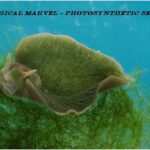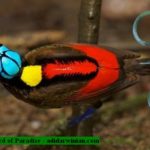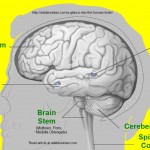In this research paper or article – “Seahorse – Male Endurance – Roles Swapped!!” – the most unusual mode of reproduction in the entire animal kingdom, found in the seahorses, is discussed in detail. I (Dr. Aditya Sardana aka Adidarwinian) have written it from a view-point of making it comprehensible to both the biologists and laymen. I have not only used simple language, but have also given the definitions and explanations of various terms and concepts concerning seahorses. Moreover, to make reading a fun, I have written some poems on seahorses epitomizing their weirdest way of reproduction.
Two Pieces of Poetry (poems or short songs), from the Pen of an Earnest Biologist (Dr. Aditya Sardana aka Adidarwinian), dedicated to the Seahorse!!
“For Seahorse, I have more than one song,
Each revealing how Nature goes wrong.”
“With Seahorse, Nature takes a wrong turn,
Shattering a biologist’s intelligence to make him learn,
Male bears the young one,
This is not a hoax,
But the Nature’s paradox.”
“With Seahorse, Nature is on the wrong course,
As Male bears the full force,
Male endures the offspring beyond a weirdo’s imagination,
Pulling out to its limit the string of the human fascination.”
Seahorses, which are a type of fish, are too comely and graceful to fail to fascinate and arouse the inquisitive nature of any human being. They are one of the most awe-inspiring creations of the Nature. Seahorses are named so because they are marine in their habitat and have a horse-like head. Animal-analogy does not end here, as the biologists often describe seahorses as having monkey-like prehensile tail, kangaroo-like pouch, and chameleon-like eyes. In the Chinese language, a seahorse is known as Hai Ma (Haima). Seahorses’ high level of exploitatation in Traditional Chinese Medicine (TCM) has become a grave issue of international interests. The use of seahorses in TCM is discissed here – Seahorses in Traditional Chinese Medicine (TCM).
Seahorses belong to the genus Hippocampus (derived from hippos: horse + campus: sea monster) of the family Syngnathidae (derived from syn: together or fused + gnathus: jaws) of the class Actinopterygii (ray-finned fishes). Hippocampus kuda is the scientific name of the common seahorse. Hippocampus kuda is commonly known as yellow seahorse and spotted seahorse.
The most important of the facts about seahorses which deeply astounds even a hardcore biologist, is that the male seahorse is the one who becomes pregnant instead of the female seahorse. This exceptional and bizarre mode of reproduction, involving swapping of male and female roles with respect to pregnancy, is the utmost form of male parental care discovered till date in the entire animal kingdom. Thus, Nature follows an unusual course in the case of seahorses, as it is the male seahorse that endures the pregnancy.
Seahorses show sexual dimorphism as the males can be differentiated from the females. In some species, the male seahorses are longer than females, and in many species, males have longer tails than females whereas females have longer trunks than males. The presence of a brood pouch or brooding pouch indicates sexual maturity in males. All species of seahorses that have been studied in the wild, appear to be monogamous (the practice or condition of having only one mate during a breeding cycle, or breeding season, or during the breeding life of a pair) within a single breeding cycle. Breeding cycle for a pair of seahorses, of a particular species, is defined as the period of time between two successive acts of mating in a breeding season. Breeding season for a particular species of seahorses is defined as the months during which pregnant male seahorses of that species are observed in the wild. The breeding season varies with species and location of the seahorse population. It is influenced by light, temperature, lunar patterns, monsoon season, and usually lasts longer in tropical waters than in the temperate. Male seahorses can become pregnant any time during the breeding season. Most species of seahorses are monogamous within an entire breeding season, that is, they maintain a faithful association with only one partner during an entire breeding season. Only when a partner dies, a new mate is sought for.

Seahorses exhibit a unique courtship ritual. The mating ritual begins with male dancing around the female. Both male and female seahorses change body colors. Through its crown-like bunch of spines present on the top of the head, known as coronet, the male seahorse produces clicking sounds. The members forming a pair entwine their tails and float across the sea or ocean floor. After some time, female seahorse stretches its body and points its tail downwards, and the male pulls back its tail and rinses its brood pouch located on belly. Male and female seahorses pair belly-to-belly, and the female inserts its ovipositor (Ovipositor is defined as an egg-laying organ found in female insects and certain fishes) into the male’s brooding pouch, deposits the eggs, which are then fertilized by the male. Male protects the fertilized eggs, nourishes them, and regulates their environment.
Even after the male seahorse becomes pregnant, courtship ritual continues in the form of daily greetings. Greeting involves coming together of the pair, each morning, so as to dance, change body colors, and entwine tails. After dancing for some time, the two individuals separate for the rest of the day in order to return the next morning for again carrying out the act of greeting. Female may again deposit a new batch of eggs the same day after the male gives birth to the young ones or only hours later after the release of the young ones. The period of gestation varies between two to four weeks. Gestation in seahorses is defined as the length of time from the fertilization of eggs in the brooding pouch of the male to the birth of the young ones. Birth refers to the release of the young ones from the male’s brood pouch. The length of the period of gestation increases with latitude and decreases as the water temperature increases.
Brooding pouch of the male seahorse acts like the womb of a mammalian female as the eggs are bathed in a placental-like fluid secreted within the pouch. This fluid nourishes the developing embryos with oxygen and nutrients, and removes the waste products. With the progression of pregnancy, the chemical nature of this fluid gradually changes to like that of the surrounding seawater. This change in the nature of the placental-like fluid helps the newborns to adapt easily to the higher salt content of the seawater after hatching. At the end of gestation period, the male seahorse gives birth, in the early hours of the morning, to the young ones. The process of giving birth (labor) usually starts in the night and involves hours of pumping, contracting and thrusting in order to release the baby seahorses. The released offsprings look like miniature adult seahorses. After hatching, no parental care is offered to the newborns.
Brood size is defined as the number of baby seahorses released by a male seahorse in any one breeding cycle or pregnancy. The number of young ones released by a male seahorse per pregnancy / breeding cycle (brood size) may range from 5 to 1500; usually only 100 to 200 baby seahorses are produced per pregnancy for most species. Brood size is found to increase with the height of the male across the species.







Most enchanting poems on seahorses with thorough knowledge on their bizarre method of reproduction.
Male bears / endures the Pregnancy – this is Stunningly Strange part of the Mother Nature!
This is what this paper is all about.
Great blend of information and poetry!